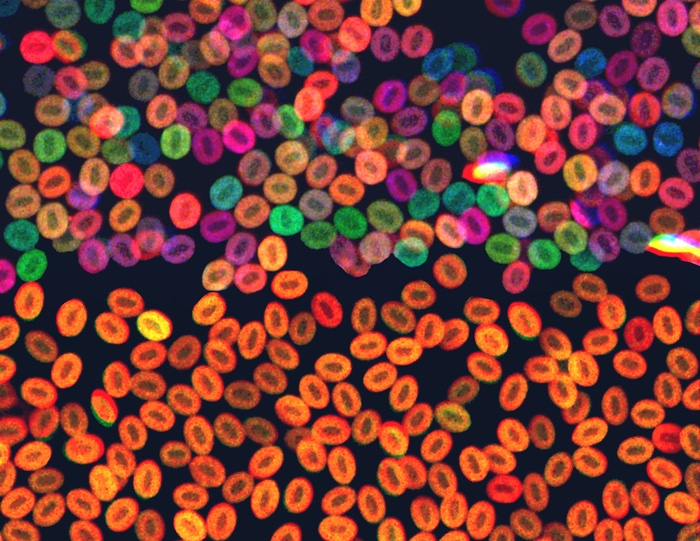Hematopoietic stem cells (HSCs) are multipotent cells that give rise to differentiated blood cells including red blood cells, white blood cells, and platelets. Despite the genetic stability of HSCs, these cells gradually acquire somatic mutations as humans age. The mutations that cause some of our blood stem cells to multiply faster than others form their own distinct populations or “clones,” known as clonal hematopoiesis. People with clonal hematopoiesis, where some blood stem cells multiply unchecked, are at risk for leukemia. Now, researchers at Boston Children’s Hospital report they have found a way to prevent leukemia by curbing rogue blood cells.
Their findings are published in the journal Science in a paper titled, “Resistance to inflammation underlies enhanced fitness in clonal hematopoiesis.”
“Clonal hematopoiesis results from enhanced fitness of a mutant hematopoietic stem and progenitor cell (HSPC), but how such clones expand is unclear,” the researchers wrote. “We developed a technique that combines mosaic mutagenesis with color labeling of HSPCs to study how acquired mutations affect clonal fitness in a native environment.”
The lab of Leonard Zon, MD, director of the stem cell research program at Boston Children’s Hospital, sought to determine the rogue populations that could be blocked, preventing leukemia from ever starting.
“These children have a germline mutation that puts them at risk for developing leukemia earlier in life,” explained Serine Avagyan, MD, PhD, a pediatric oncologist at Dana-Farber/Boston Children’s Cancer and Blood Disorders Center and a fellow in the Zon lab. “They can develop clonal hematopoiesis in adolescence and sometimes at a younger age. We think these predisposition syndromes fast-forward the process of clonal hematopoiesis, resulting in early-onset leukemia.”
“If you could understand how clones of blood stem cells become cancerous, you could specifically target the offending clone that’s causing the problem,” said Zon.
Using CRISPR, the team introduced different mutations found in human clonal hematopoiesis into the embryonic fish.
“Serine was able to create mosaic mutations, such that some of the blood stem cells had the mutation and others didn’t,” said Zon. “We could then ‘compete’ the cells in the fish’s body to see which mutations caused a certain line of cells to take over.”
The researchers observed the gene asxl1 led to one blood stem cell population, and a single color of cell, becoming dominant in the zebrafish. The researchers then examined what genes different kinds of blood cells were turning on as a result.
“There has been a lot of evidence that the bone marrow is really inflamed in patients with clonal hematopoiesis,” said Zon. “But this is one of the first studies to demonstrate that there are pathways in stem cells that make them resistant to the inflammation.”
The researchers believe that taking out that resistance factor could lead to strategies for halting clonal hematopoiesis and stopping leukemia at its earliest stage.
Looking toward the future, the researchers plan to search for a small-molecule drug that would target nr4a1 or related anti-inflammatory factors, a first step toward a clinical trial that would seek to reduce the risk of leukemia in people with clonal hematopoiesis and high-risk mutations.


